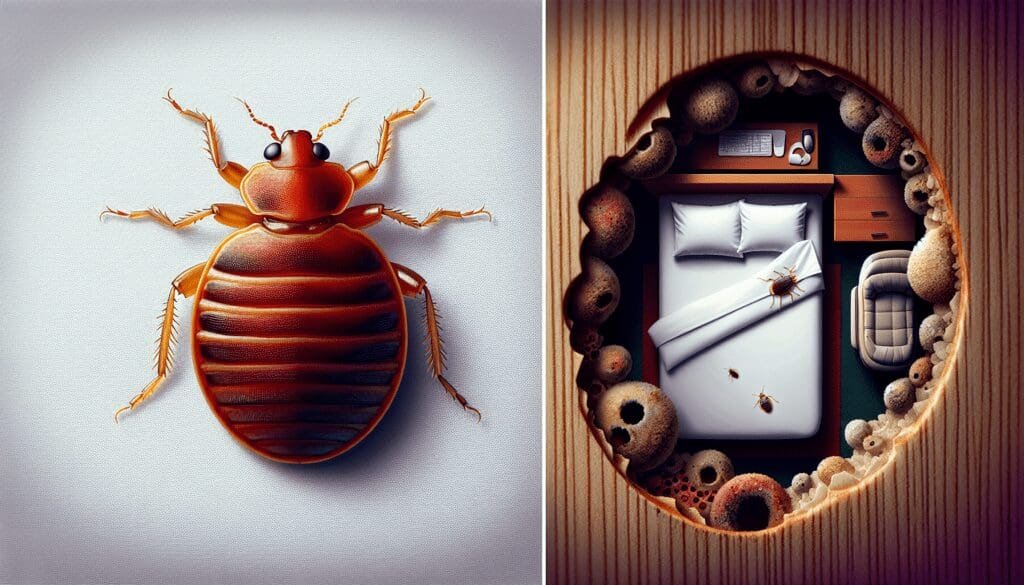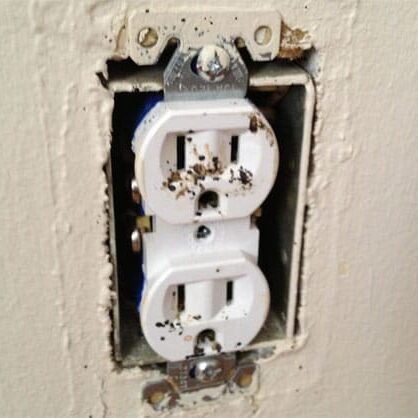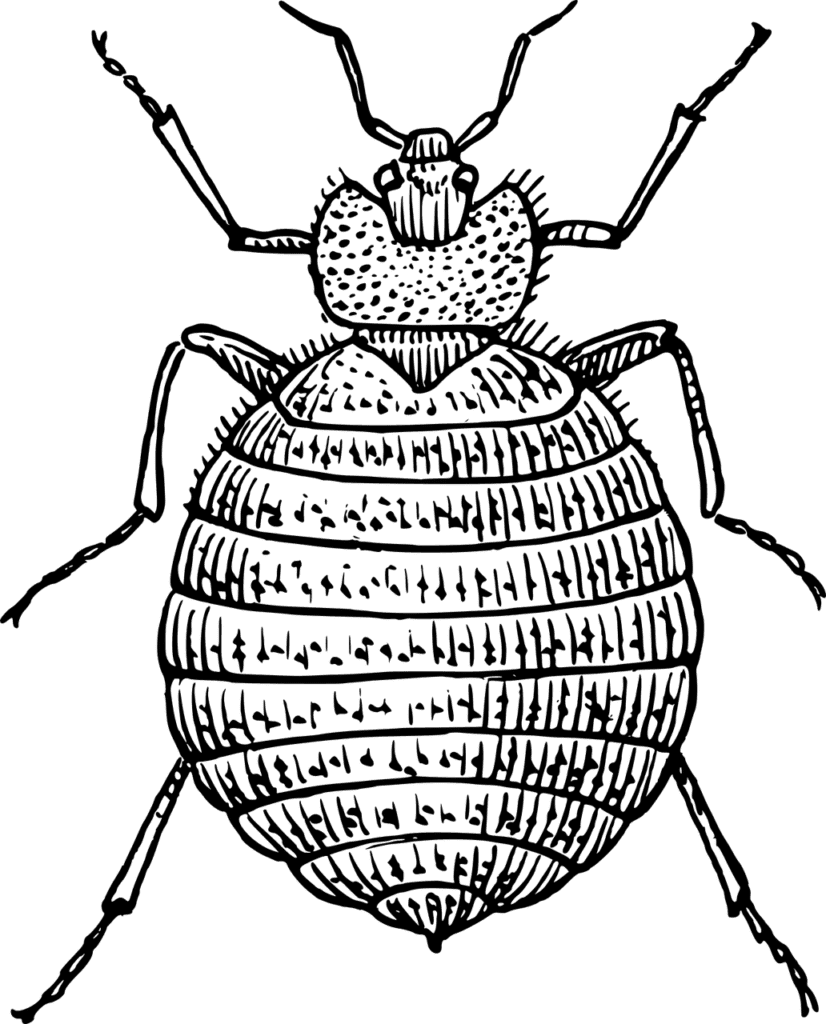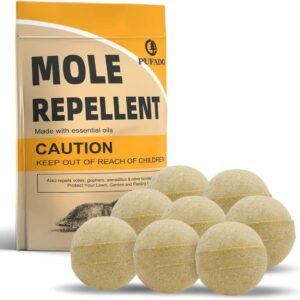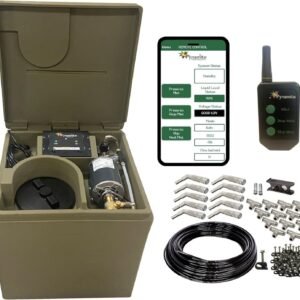How To Bedbugs Spread
Have you ever wondered how bedbugs manage to spread so rapidly? In this article, we will explore the fascinating world of bedbug infestations and uncover the secrets behind their rapid dispersion. From their sneaky movements to their uncanny ability to hitchhike, we will delve into the mechanisms that enable these pesky insects to infest homes, hotels, and even public spaces. Join us on this intriguing journey as we unveil the mysteries of how bedbugs spread and learn how to protect yourself from their unwanted presence.
How Do Bedbugs Spread
Bedbugs are notorious pests that can quickly infest and spread within homes, hotels, and public places. Understanding how they spread is crucial in preventing infestations and addressing existing ones. Here, we will explore the various ways bedbugs spread and discuss methods to control and eliminate infestations.
Invasion through Infested Items
Bedbugs can easily spread by hitchhiking on infested items such as luggage, clothing, and furniture. When you come into contact with these items, bedbugs may latch onto your belongings and make their way into your home. For example, staying in a hotel room infested with bedbugs can result in these pests infesting your luggage and accompanying you back home.
Hitchhiking on Personal Belongings or Clothing
Another common way bedbugs spread is by hitchhiking on personal belongings or clothing. These pests have a knack for hiding in the seams and folds of items such as bags, backpacks, and coats. If you unknowingly bring infested items into your home, the bedbugs can quickly spread and infest your living space.
Traveling on Furniture or Upholstery
Bedbugs can also spread by traveling on furniture or upholstery. They can hide in the crevices and cracks of chairs, sofas, and mattresses, waiting for an opportunity to hitch a ride to a new location. Whether it’s a used piece of furniture or a neighbor’s infested item, bedbugs can easily infest your home if proper precautions are not taken.
Infestation through Secondhand Items
If you purchase secondhand items without properly inspecting them, you run the risk of bringing bedbugs into your home. Furniture, clothing, and even electronics can be infested with these pests. Always thoroughly inspect any secondhand items before bringing them indoors to prevent a potential infestation.
Spreading between Adjoining Buildings
Bedbugs are not limited to infesting a single home or building. They can easily travel between adjoining buildings through cracks, crevices, and shared walls. This means that even if your own home is bedbug-free, an infestation in a neighboring building can quickly spread to your property if proper preventive measures are not in place.
Methods of Bedbug Infestation
Understanding the various methods of bedbug infestation is crucial in preventing their spread. By being aware of how these pests can infiltrate your space, you can take proactive measures to protect yourself and your property.
Traveling on Luggage
One of the most common ways bedbugs infest homes is through traveling on luggage. When you stay in a hotel or motel room infested with bedbugs, these pests can easily hitch a ride on your luggage, making their way into your home without your knowledge. It is essential to inspect your luggage thoroughly and take preventive measures after traveling to minimize the risk of infestation.
Transportation in Used Furniture
Used furniture can be a source of bedbug infestations. People often discard infested furniture without realizing it. If you bring used furniture into your home without proper inspection, you may also unknowingly introduce bedbugs. Always inspect secondhand furniture carefully and consider treating it before bringing it indoors.
Infestation through Clothing or Bedding
Bedbugs can hitchhike on infested clothing or bedding, making their way into your home. If you come into contact with infested items, such as at a friend’s house or a public place, you risk bringing bedbugs home with you. Regularly washing and drying clothing and bedding on high heat can help eliminate any potential hitchhiking bedbugs.
Hitchhiking on Personal Belongings
Along with hitchhiking on clothing and bedding, bedbugs can also latch onto personal belongings such as bags, purses, and electronics. These pests are resilient and can survive for extended periods without feeding. Always be vigilant and inspect your personal belongings regularly to prevent the spread of bedbugs.
Importation through Pets
While bedbugs primarily feed on humans, they can also bite animals such as cats and dogs. These pests can hitch a ride on your pets and infest your home. Regularly inspect your pets for any signs of bedbugs, such as bites or itching. Additionally, keep your home clean and vacuum regularly to minimize the risk of infestation.
Bedbug Infestation Process
Understanding the different stages of a bedbug infestation is crucial in effectively addressing the problem. By recognizing these stages, you can take appropriate measures to control and eliminate the infestation.
Initial Infestation
During the initial infestation stage, a small number of bedbugs may invade your home or property. These pests typically hide in cracks, crevices, and furniture during the day and come out at night to feed. It is crucial to identify the signs of a bedbug infestation early on to prevent further spread.
Reinfestation
If a bedbug infestation is not effectively treated, there is a high risk of reinfestation. Bedbugs can reproduce rapidly, and even a small number of missed eggs or bugs can lead to a full-blown infestation once again. Thorough treatment and monitoring are essential to prevent reinfestation.
Secondary Infestation
Secondary infestations occur when bedbugs spread from one area to another within the same property or building. For example, if a heavily infested room shares a wall with another room, the bedbugs can easily move between the spaces. Regular inspections and targeted treatments are necessary to prevent secondary infestations.
Neighboring Infestation
In some cases, bedbugs can spread from one property to another, resulting in neighboring infestations. This often occurs in multi-unit buildings, such as apartments or condominiums, where shared walls, ceilings, and floors provide easy pathways for bedbugs to travel. Close coordination among residents and professional treatment may be necessary to eradicate the infestation.
Factors Affecting Bedbug Spread
Several factors contribute to the spread of bedbugs. Understanding these factors can help in implementing effective preventive measures and combating infestations.
High Population Density
High population density, such as living in densely populated urban areas or staying in crowded accommodations, increases the risk of bedbug spread. With more opportunities for encounters with bedbugs, the likelihood of infestations also rises. Awareness and proactive prevention can help combat the spread in such areas.
Urban and Rural Areas
Bedbugs can thrive in both urban and rural areas. While urban areas typically have higher population density, bedbugs can also spread in rural settings, particularly through travel and movement of infested items. Regardless of your location, it is important to be vigilant and take preventive measures to protect your home and belongings.
Movements and Migration of People
Human movements, whether through travel or relocation, can contribute to the spread of bedbugs. The increase in international travel and the movement of people from one region to another have provided ample opportunities for these pests to hitch a ride to new locations. Always be cautious when traveling and ensure that you take preventive measures to avoid bringing bedbugs back with you.
Presence of Secondhand Stores
Secondhand stores can unwittingly facilitate the spread of bedbugs. Infested furniture, clothing, and other items donated to these stores can serve as a source of infestations for unsuspecting buyers. Always inspect secondhand items thoroughly before purchasing and consider treating them before bringing them indoors.
Public Places and Bedbug Transmission
Public places can serve as hotspots for bedbug transmission. The high turnover of people and the movement of infested items can create opportunities for bedbugs to spread. Here are some common public places where bedbug transmission can occur:
Hotels, Motels, and Resorts
Hotels, motels, and resorts are notorious for bedbug infestations. With constant occupancy turnover and guests coming from various locations, these establishments provide ample opportunities for bedbugs to spread. When staying in a hotel, it is essential to inspect the room thoroughly and take preventive measures to avoid bringing bedbugs home.
Airplanes, Trains, and Buses
Public transportation, including airplanes, trains, and buses, can also be breeding grounds for bedbugs. These pests can infest seats, upholstery, and luggage compartments, making it easy for them to hitch a ride and infest new locations. Remain vigilant when traveling and inspect your surroundings to minimize the risk of bedbug transmission.
Laundry Facilities
Shared laundry facilities can be a hub for bedbug transmission. Bedbugs can transfer from infested clothing or bedding to the machines and, subsequently, to other people’s belongings. It is crucial to clean and inspect your laundry thoroughly before and after each use to prevent the spread of bedbugs.
Hospitals and Medical Facilities
Even healthcare settings are not immune to bedbug infestations. Due to the constant movement of people and the presence of personal belongings, bedbugs can easily spread within hospitals and medical facilities. Strict hygiene practices and regular inspections are essential to prevent the transmission of bedbugs in these environments.
Preventing Bedbug Spread
Prevention is key when it comes to stopping bedbug spread and minimizing the risk of infestation. By incorporating these preventive measures into your daily routine, you can significantly reduce the chances of encountering these pesky pests.
Regular Inspection and Cleaning
Regularly inspect your home, furniture, and personal belongings for any signs of bedbug activity. Look for live bugs, shed skins, or dark stains on bedding and upholstery. Vacuum and clean your living space regularly, paying close attention to cracks, crevices, and other potential hiding spots.
Effective Laundry Practices
When dealing with potentially infested clothing or bedding, practice effective laundry practices. Wash and dry your items on high heat settings as bedbugs cannot survive extreme temperatures. If possible, avoid using shared laundry facilities and consider using protective covers for your luggage and belongings.
Proper Furniture and Secondhand Item Inspection
Before purchasing used furniture or accepting secondhand items into your home, thoroughly inspect them for any signs of bedbugs. Pay attention to cracks, seams, and crevices where they might hide. Consider treating the items with appropriate methods such as steam or heat treatment before bringing them indoors.
Travel Precautions
When traveling, take precautionary measures to prevent bedbug spread. Inspect your hotel room thoroughly upon arrival, paying close attention to the mattress, headboard, and furniture. Keep your luggage on an elevated stand or use protective covers to minimize the risk of bedbugs latching on.
Use of Protective Covers
Protective covers for mattresses and box springs can act as a barrier against bedbugs. These covers encase the entire mattress, preventing bedbugs from entering or escaping. Regularly inspect and clean the covers to ensure they remain intact and effective.
Controlling and Eliminating Bedbug Infestations
In the unfortunate event of a bedbug infestation, it is crucial to take swift and appropriate action to control and eliminate these pests. Here are several methods commonly used to eradicate bedbug infestations.
Professional Extermination
Engaging the services of a professional exterminator is often the most effective way to eliminate bedbug infestations. These professionals have the expertise, knowledge, and specialized equipment to locate and eradicate bedbugs thoroughly. They may use a combination of techniques, including chemical treatments and heat treatments, to eliminate the infestation.
Heat Treatment
Heat treatment is a popular method for killing bedbugs and their eggs. This treatment involves exposing infested areas to high temperatures that are lethal to bedbugs. Professional exterminators use specialized heating equipment to ensure that all areas of the infestation reach the required temperatures.
Vacuuming and Steam Cleaning
Vacuuming and steam cleaning are effective methods to eliminate bedbugs and their eggs from furniture, carpets, and other surfaces. Use a vacuum cleaner with a HEPA filter to ensure that the captured bedbugs do not escape. Steam cleaning can also be used to treat infested items that cannot be vacuumed.
Use of Pesticides
Pesticides can be used as part of an integrated pest management approach to control bedbug infestations. It is essential to use pesticides specifically labeled for bedbugs and follow the instructions carefully. While pesticides can be effective in killing bedbugs, it is crucial to consider potential health risks and consult professionals for proper application.
Cleaning and Intensive Decluttering
Thorough cleaning and decluttering are essential in controlling bedbug infestations. By removing unnecessary items and reducing hiding places for bedbugs, you can make it easier to identify and treat the infestation. Wash and dry infested bedding and clothing on high heat settings to eliminate any hidden bedbugs.
Detecting and Recognizing Bedbug Infestations
Being able to detect and recognize bedbug infestations is crucial in taking prompt action and preventing further spread. Here are some signs to watch out for:
Identifying Bedbug Bites
Bedbug bites often appear as small, itchy, red marks on the skin. The bites are typically arranged in a line or cluster and may be accompanied by a mild allergic reaction or itching. However, it is important to note that not everyone reacts to bedbug bites, and some people may show no visible signs.
Finding Bedbug Eggs and Droppings
Bedbug eggs are small, whitish ovals, about the size of a pinhead. They are often found in tight spaces such as mattress seams, furniture cracks, or along baseboards. Bedbug droppings, which look like small black or brown spots, may also be present in infested areas.
Noticing Musty Odor
Bedbugs release a distinct musty odor, often described as a sweet and sickly scent. If you notice an unusual odor in your home, it could be a sign of a bedbug infestation. This odor is produced by the bedbugs’ scent glands and is often most noticeable in heavily infested areas.
Spotting Live Bedbugs
Live bedbugs are small, oval-shaped insects with a reddish-brown color. They are about the size of an apple seed and are often active during the night. You may find live bedbugs hiding in dark crevices, mattress seams, or along baseboards.
Identifying Shed Skins
As bedbugs grow, they shed their exoskeletons or skins. These discarded skins are translucent and may be found near their hiding spots. The presence of shed skins indicates an active infestation and the need for immediate action.
Health Risks Associated with Bedbug Infestations
While bedbugs are not known to transmit diseases to humans, their presence can still pose various health risks. Here are some potential health effects associated with bedbug infestations:
Allergic Reactions
Some individuals may have allergic reactions to bedbug bites, resulting in itching, redness, and swelling. In severe cases, allergic reactions can lead to anaphylaxis, a potentially life-threatening condition.
Skin Infections
Continuous scratching of bedbug bites can break the skin and lead to bacterial infections. Secondary infections may occur, causing symptoms such as pain, redness, and pus-filled blisters.
Mental and Emotional Distress
Living with a bedbug infestation can cause significant mental and emotional distress. The constant worry about being bitten, disrupted sleep, and anxiety about the infestation’s impact on one’s daily life can take a toll on a person’s mental well-being.
Secondary Health Effects
The presence of bedbugs can also have secondary health effects. The stress and lack of quality sleep associated with an infestation can lead to fatigue, irritability, and difficulty concentrating. Additionally, the use of pesticides to control infestations may pose health risks if not applied correctly.
Risk of Anemia
Although rare, severe bedbug infestations can lead to anemia. Bedbugs survive by feeding on blood, and in extreme infestations, repeated feeding can result in a person experiencing a significant blood loss, potentially leading to anemia.
Steps for Effective Bedbug Treatment
If you discover a bedbug infestation in your home, it is essential to take immediate action to address the problem effectively. Follow these steps for effective bedbug treatment:
Identify and Confine the Infestation
Thoroughly inspect your home to identify the extent of the infestation. Focus on areas where bedbugs are most likely to hide, such as mattresses, upholstered furniture, and cracks in walls. Once identified, confine the infestation by sealing off affected areas and preventing the bedbugs from spreading further.
Thoroughly Clean and Disinfect
Before proceeding with treatment, it is crucial to clean and disinfect your home. Vacuum infested areas, paying close attention to cracks and crevices. Wash infested bedding and clothing on high heat settings, and consider steam cleaning furniture and carpets.
Apply Appropriate Treatment Methods
Depending on the severity of the infestation and personal circumstances, determine the most suitable treatment method. This may include professional extermination, heat treatment, vacuuming, steam cleaning, or the use of pesticides. Follow product instructions carefully and take necessary safety precautions.
Monitor and Retreatment
After initial treatment, monitor your home for any signs of continued activity or reinfestation. It is common for several treatments to be necessary to completely eradicate bedbugs. Follow up with additional treatments as needed and consult professionals if the infestation persists.
Prevent Future Infestations
To prevent future bedbug infestations, continue practicing preventive measures such as regular inspections, effective laundry practices, and proper furniture inspection. Minimize clutter and maintain cleanliness in your living space to reduce potential hiding spots for bedbugs.
In conclusion, understanding how bedbugs spread, the methods of infestation, and the factors that contribute to their spread is crucial in preventing and addressing infestations. By implementing preventive measures, promptly addressing infestations, and practicing effective treatment methods, you can protect yourself, your home, and your belongings from the nuisance and potential health risks associated with bedbug infestations.
